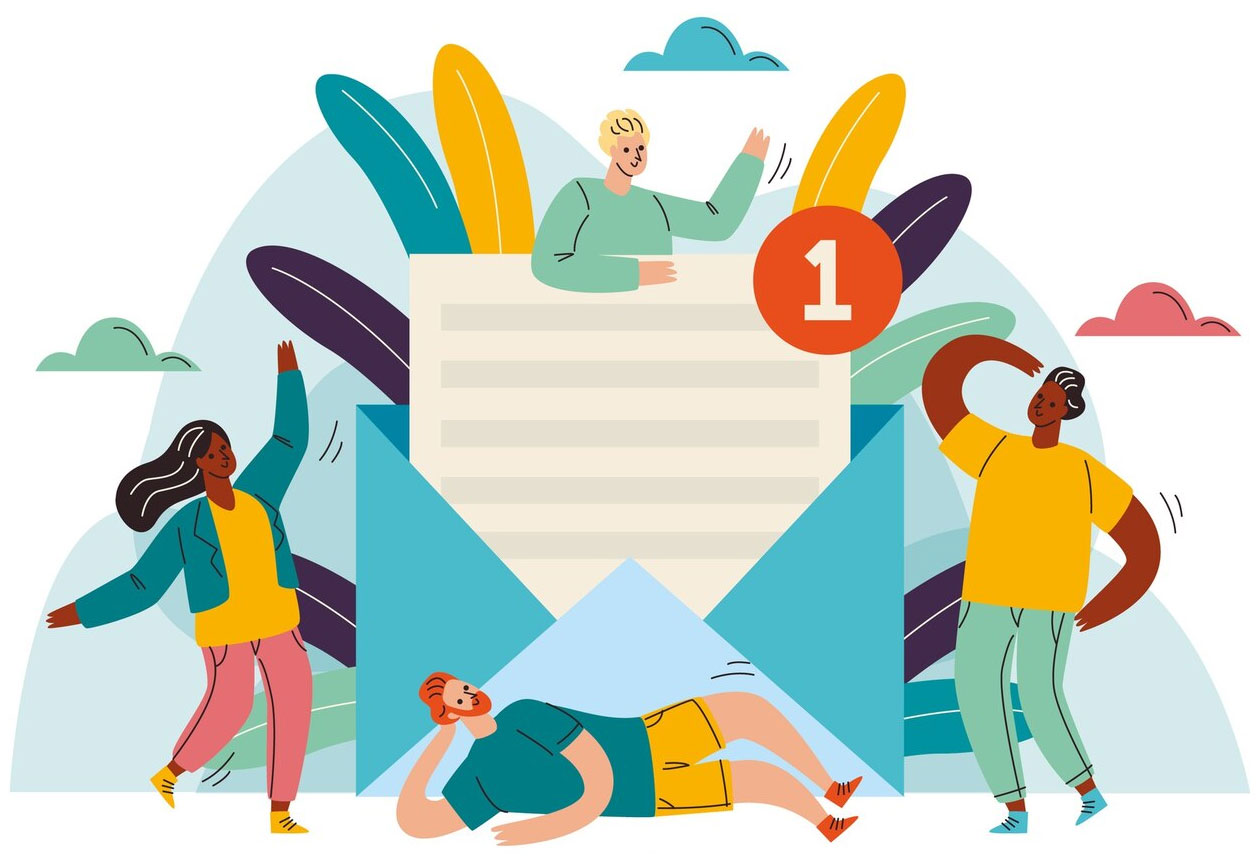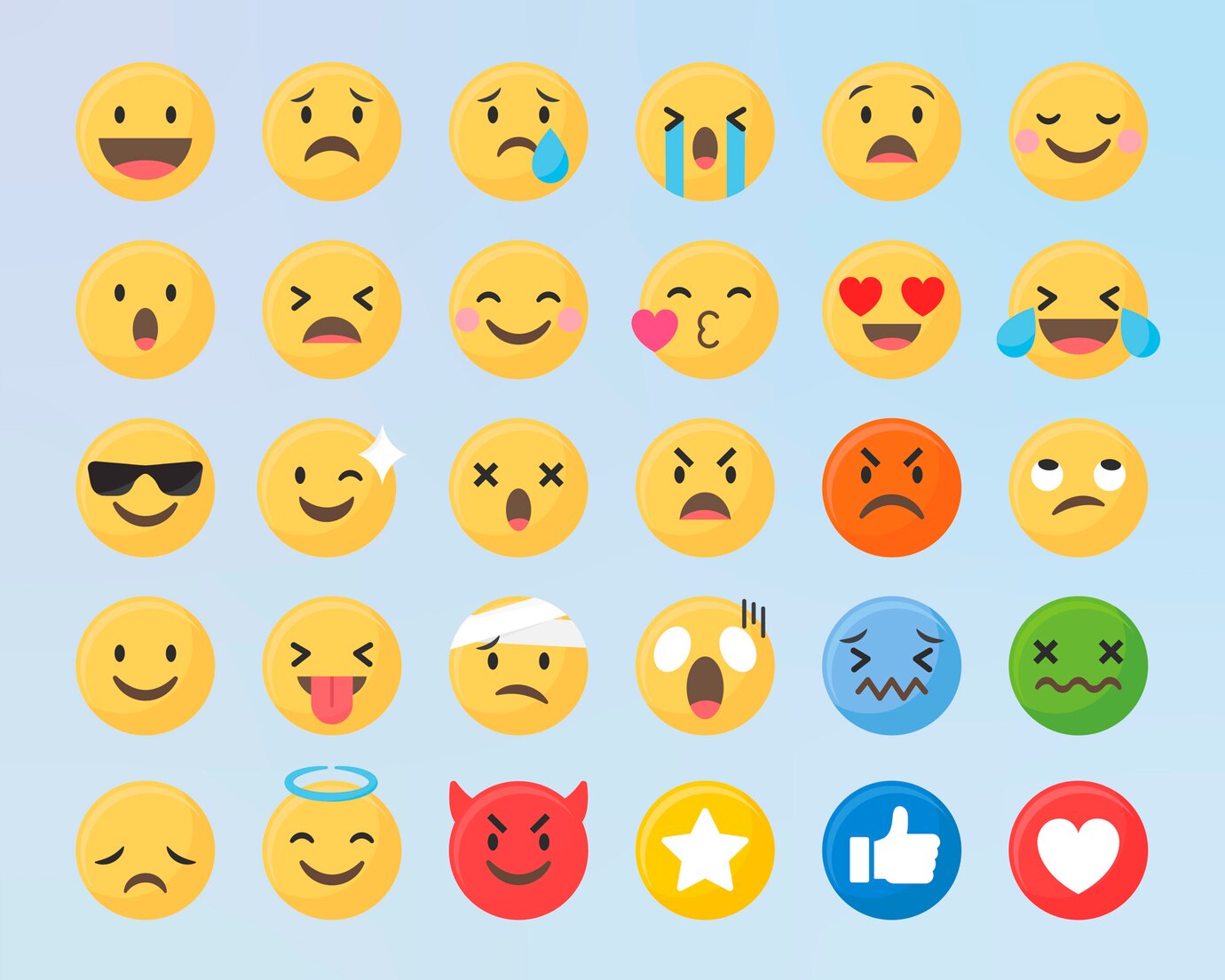Did you know that 47% of email recipients decide whether to open an email based solely on the subject line? This startling statistic highlights the monumental role that just a few words can play in the success of your email marketing campaigns. In the digital age, where inboxes are inundated with messages, having a subject line that stands out isn’t just beneficial; it’s essential.
Subject lines serve as the gatekeepers of your email content. A compelling subject line not only sparks interest but also entices the recipient to click through, directly influencing your open rates and, subsequently, the overall effectiveness of your email marketing efforts. This makes mastering the art of the subject line a crucial skill for marketers aiming to enhance engagement and conversion rates.

In this detailed blog post, we delve deep into the psychology behind what makes an email subject line irresistible. We will uncover the tactics that prompt recipients to click open rather than delete. Additionally, we’ll explore the latest trends in email subject lines that are setting the pace in various industries today. From personalization tricks to the strategic use of emojis, learn what currently resonates with audiences. Understanding how to effectively A/B test your subject lines can transform your approach from guesswork to a data-driven strategy, ensuring every campaign you launch is optimized for the highest engagement.
At Email Engagement Pros, we specialize in crafting captivating email subject lines that drive open rates. Our deep understanding of advanced subject line strategies enables us to empower marketers to reach their audience effectively. Join us as we unpack these strategies, providing you with the tools you need to revolutionize how you communicate in the crowded world of email.
Understanding the Psychology Behind Subject Lines
The craft of creating effective email subject lines lies in understanding the human psyche—what motivates a person to take action and what keeps them engaged. Key psychological principles such as urgency, curiosity, fear of missing out (FOMO), and personalization are instrumental in designing subject lines that prompt users to click.

1. Urgency: Creating a sense of urgency in an email subject line is a powerful tool. It compels recipients to act quickly for fear of missing out on something important or beneficial. Phrases like “Limited time offer” or “Hurry, ends soon!” can effectively drive open rates, as they convey a time-sensitive message that demands immediate attention.
2. Curiosity: Humans are naturally curious creatures. Subject lines that tease information without giving away too much can entice readers to open the email in search of more. For instance, starting a subject line with “You won’t believe what we’re offering…” can trigger enough curiosity to boost open rates. However, it’s crucial that the content of the email fulfills the promise made by the subject line, or it risks losing the trust of your audience.

3. Fear of Missing Out (FOMO): This principle taps into the anxiety that others might be having rewarding experiences from which one is absent. Using FOMO in subject lines involves phrases like “Join 5000+ others,” or “Don’t miss out on our exclusive webinar,” which highlight the popularity and limited availability of an offer, pushing the recipient to engage for fear of missing out.
4. Personalization: Incorporating personalization techniques such as using the recipient’s name or referencing their recent activities can significantly increase open rates. This strategy makes the email feel more like a one-on-one conversation rather than a broadcast message, enhancing the relevance of the email to the individual’s situation or interests.
Emotional Triggers: Emails that connect on an emotional level can be highly effective. Emotions such as joy, anticipation, and even mild anxiety can be triggered with the right wording, influencing the recipient’s behavior. Emotional triggers should be used ethically and aligned with the brand’s message to foster a positive relationship with the audience.
Relevance and Context: Ensuring that the subject line is relevant to the recipient’s needs or situation is crucial. This relevance can be achieved by segmenting email lists and tailoring the messages to meet the interests and behaviors of different groups. For example, sending a tailored promotion based on past purchases or browsing history can make the email feel specially crafted for the recipient.
Clarity vs. Creativity: While creativity can help your email stand out, clarity should never be sacrificed for the sake of being clever. A clear and straightforward subject line often performs better because it sets the right expectations for what the email contains. On the other hand, a creative, yet ambiguous subject line may draw initial interest, but it could lead to disappointment if the content doesn’t match the expectation it sets.
By balancing these psychological principles with the knowledge of your audience’s preferences and behaviors, you can craft email subject lines that not only capture attention but also convert that attention into meaningful engagement.
Analyzing Current Trends in Email Subject Lines
In the ever-evolving landscape of email marketing, staying abreast of the latest trends in subject lines is crucial for maintaining high engagement rates. From personalization to the strategic use of emojis, let’s explore how current trends are shaping the way marketers craft their email campaigns.
1. Personalization: Personalization has moved beyond just inserting a recipient’s name into the subject line. Today, marketers are leveraging sophisticated data analytics to include more personalized details such as location, past purchase behavior, and even browsing history. For instance, a subject line that says, “John, check out these hand-picked products just for you!” or “Jane, your favorite band is coming to Chicago!” not only captures attention but also increases the relevance of the email, significantly boosting open rates. This tailored approach makes each email feel like a bespoke message rather than a mass broadcast.

2. Brevity and Clarity: As inboxes become more cluttered, the demand for clear and concise communication grows. Marketers are cutting the fluff to make subject lines short and to the point. Subject lines like “Sale Ends Tonight” or “New Blog Post” tell the recipient exactly what to expect without any ambiguity. This trend towards brevity respects the recipient’s time and competes effectively for their attention amidst a sea of other emails.
3. Emoji Usage: Emojis in subject lines can make an email stand out and convey emotions or ideas quickly. They add a touch of personality and can increase open rates, especially among younger demographics. However, their effectiveness varies widely across different industries. For instance, a smiley face may work well in a promotional email from a fashion retailer but could seem out of place in a serious business newsletter. It’s important to understand your audience and industry norms before deciding to incorporate emojis into your subject lines.
4. Question-Based Lines: Posing a question in the subject line can be an effective way to engage the recipient’s curiosity and prompt them to seek answers inside the email. Questions like “Do you know the latest trends in digital marketing?” or “Ready to achieve your fitness goals?” provoke thought and encourage engagement, making them powerful tools for increasing open rates.
5. Incorporating Numbers and Lists: Including numbers and lists in subject lines has shown to capture reader’s attention by offering clear, quantifiable reasons to engage with the content. For example, “5 Tips to Improve Your SEO” or “Top 10 Destinations for 2024” provide a preview of what the email contains, setting clear expectations. This format is particularly appealing because it promises a quick, informative read, which is often irresistible to busy recipients.
These trends underscore the importance of understanding your audience and the context in which they interact with your emails. By aligning your email subject lines with these current trends and continuously testing their effectiveness, you can ensure that your email marketing campaigns remain fresh and relevant, driving better engagement and open rates.
Case Studies: What Works in Various Industries
Effective email subject lines vary significantly across different industries, each tailored to specific audiences and business goals. By examining successful case studies from e-commerce, B2B, services, and nonprofit sectors, we can glean insights into crafting subject lines that resonate and drive engagement.
1. E-commerce: In the fast-paced world of e-commerce, email subject lines that convey urgency and exclusivity perform exceptionally well. Flash sale announcements like “24-Hour Flash Sale: 50% Off All Items!” create a sense of urgency, compelling subscribers to act quickly. For new product arrivals, a subject line such as “Just Dropped: Exclusive Sneaker Collection Available Now!” generates excitement and taps into the desire to be the first to have new products. Meanwhile, for cart abandonment scenarios, personalized reminders like “Forgot Something? Your Cart is Waiting!” effectively nudge customers back to complete their purchases.

2. B2B (Business to Business): In B2B communications, the focus shifts towards value and professional growth opportunities. Subject lines for webinar invites like “Join Our Free Webinar on Innovative Marketing Tactics” offer professional development opportunities that appeal to business professionals looking to enhance their skills. Industry reports are best highlighted with data-driven subject lines, such as “2024 Industry Forecast: Key Trends and Predictions.” For networking events, a subject line stating “Exclusive Invite: B2B Networking Event for Industry Leaders” can create a sense of exclusivity and opportunity for professional networking.
3. Services (Healthcare, Education, etc.): Service-oriented sectors such as healthcare and education benefit from clear, informative subject lines. Appointment reminders might simply state, “Appointment Reminder: Your Check-up on [Date] at [Time].” For educational course enrollments, a direct appeal like “Enroll Now: Limited Spots Available in Our Certified Data Science Course” emphasizes the urgency and educational value. Service updates can be straightforward, providing essential information right in the subject line, e.g., “Service Alert: Upcoming System Maintenance on April 5th.”
4. Nonprofit: Nonprofit organizations often see great success with subject lines that tug at emotions and underscore impact. Fundraising campaign emails might use a compelling call to action, such as “Help Us Reach Our Goal – Only $500 Left!” Success stories can be shared with subject lines like “See How Your Contribution Makes a Difference,” which connect donors with the outcomes of their generosity. Volunteer opportunities can be highlighted with engaging questions like “Ready to Make a Difference? Volunteer with Us!”
SEO Integration: In each of these cases, integrating SEO-friendly keywords such as “flash sale,” “webinar,” “course enrollment,” and “fundraising” helps the emails not only resonate with the intended audience but also perform well in searches related to these topics. Matching user intent with clear, actionable subject lines ensures that the emails are targeted effectively, enhancing both open rates and overall engagement.
By analyzing these diverse examples, marketers can better understand how to craft subject lines that meet the unique needs and interests of their specific audience, ultimately leading to higher open rates and more successful email campaigns.
Tips for Crafting Effective Subject Lines
Creating compelling subject lines is both an art and a science. Here are five essential tips to consider when crafting subject lines that engage and convert:
1. Know Your Audience: Understanding who your recipients are—what they value, need, and expect—is fundamental. Segment your email list based on demographics, past behaviors, and engagement patterns to tailor your messaging effectively. For example, younger audiences may respond better to trendy language and emojis, whereas a professional B2B audience might prefer more straightforward, benefit-driven subject lines. Personalizing content to fit the audience’s interests increases the likelihood of your emails being opened.

2. Clarity Over Cleverness: While witty subject lines can be eye-catching, clarity should never be sacrificed for the sake of being clever. Your subscribers are busy and will appreciate subject lines that are direct and informative. For instance, “Get 20% off your next order – Today Only!” is clear and likely more effective than something ambiguous like “Miss it and miss out!” The latter might sound catchy, but it fails to communicate the message straightforwardly, potentially leading to lower open rates.
3. Use of Action-Oriented Verbs: Start your subject lines with verbs that inspire action to grab attention and drive clicks. Words like “Discover,” “Achieve,” “Start,” “Join,” and “Save” propel recipients towards taking an action, making the email’s purpose clear right from the outset. For example, “Join 500 Professionals at Our Networking Event” clearly tells recipients what action you want them to take.
4. Testing Tone and Style: Not all audiences are the same, and what works for one might not work for another. A/B testing different tones and styles can help you understand what resonates best with your audience. You might test a casual tone versus a formal one to see which garners more opens. This method allows you to refine your approach based on actual data, ensuring your communication is always optimized for engagement.
5. Consistency with Brand Voice: Ensure your subject lines always reflect your brand’s tone and values. Consistency builds trust and recognition. If your brand is known for a professional and informative tone, keep your subject lines aligned with this voice. Conversely, if your brand is more laid-back or playful, let this show in your subject lines as well. For instance, a brand known for humor might use a pun, while a luxury brand might focus on exclusivity and elegance in their wording.
By adhering to these guidelines, marketers can craft email subject lines that not only capture attention but also foster a deeper connection with their audience, ultimately leading to improved open rates and successful email campaigns.
How to A/B Test Subject Lines Effectively
A/B testing is an essential method for determining which email subject lines generate the best open rates. Here’s how to conduct these tests effectively:
Setting Clear Objectives: Before starting, define what success looks like for your campaign. Typically, this could be higher open rates, but it might also include higher click-through rates or increased conversions. Clear goals help focus the testing process.
Choosing Variables for Testing: Decide which elements of the subject line you want to test. This might include the use of personalization, the presence of emojis, the tone (casual vs. formal), or specific words or phrases that imply urgency.
Analyzing Results: Use email marketing tools that support A/B testing to send out your variations to a statistically significant portion of your list. Track the performance of each variation in terms of open rates, click-through rates, and other relevant metrics.

Iterative Testing: A/B testing is not a one-off task; it’s a continuous process. Based on the results, refine your subject lines and test again. This iterative process helps continually improve the effectiveness of your email marketing.
How to A/B Test Subject Lines Effectively
A/B testing is an essential method for determining which email subject lines generate the best open rates. Here’s how to conduct these tests effectively:
Setting Clear Objectives: Before starting, define what success looks like for your campaign. Typically, this could be higher open rates, but it might also include higher click-through rates or increased conversions. Clear goals help focus the testing process.
Choosing Variables for Testing: Decide which elements of the subject line you want to test. This might include the use of personalization, the presence of emojis, the tone (casual vs. formal), or specific words or phrases that imply urgency.
Analyzing Results: Use email marketing tools that support A/B testing to send out your variations to a statistically significant portion of your list. Track the performance of each variation in terms of open rates, click-through rates, and other relevant metrics.
Iterative Testing: A/B testing is not a one-off task; it’s a continuous process. Based on the results, refine your subject lines and test again. This iterative process helps continually improve the effectiveness of your email marketing.
FAQs
Q1: How often should I test my email subject lines?
A: Regularly. Consider testing with every campaign if possible, to continually refine and improve your strategies based on current data.
Q2: How many people should I include in my A/B test for reliable results?
A: This depends on your total list size, but typically a few hundred to a few thousand per variation can provide meaningful insights.
Q3: Can I A/B test more than two subject lines at once?
A: Yes, some tools allow you to test multiple variations simultaneously, which can provide richer insights faster.
